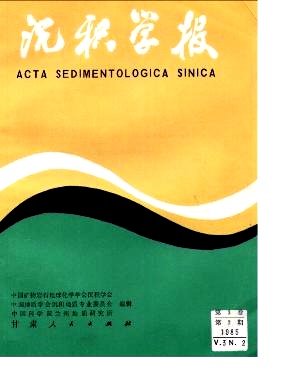MICROFACIES MARKERS OF CLASTICS OF THE LOWER TERTIARY IN JIYANG SAG
- Publish Date: 1985-06-10
Abstract: The application of microfacies markers to the identification of sedimentary facies has been rarely found at home and abroad. It only shows a preliminary attempt at present. With the progress of the exploration and development of the Jiyang Sag, it has been a main task to seek non-anticline reservoirs. It is an important way to search lithological reservoirs according to the types of genesis and depositional conditions of various kinds of sand bodies. Consequently, in unknown areas it is an urgent subject to study the microfacies markers in the precent oil and gas exploration by the thin section analysis of cuttings. Therefore, the writer has observed over 600 thin sections of cores and cuttings from 7 cored wells and 25 cut wells in Dongying and Zhanhua depressions. Based on them,9 types including 15 microfacies markers and other markers have been obtained in Tertiary clastic rocks in this area (Table 1). With these markers, the following has been classified' two sedimentary systems above and below water and 11 microfacies (including deep-lake channel of gravity, semi deep-lake turbidite fan, shallow lake fan, sand in lake bank, sand in shallow bank, estuarine bar. subaqueous sand barrier,distributary channel,levee,alluvial channel and alluvial fan, etc.)of fourtypes of currents(subaqueous gravity current, wave-lake current,drag current above water and mud-rock flow). The identification of two sedimentary systems and sediments of four types of currents of the Tertiary clastic rocks in the study area are discribed as follows: Various dissimilar grains and cryptocrystalline carbonate cements can not be seen in sedimentary system above water. On the contrary, they appear in subaqueous sedimentary system. The sediments of subaqueous gravity current are characterized by "mixed" fabric, "porphyritic" fabric, "lime-mud matrix" support, tearing fragments, mixed types of dissimilar grains with small quantity, sliding deformed bedding, graded bedding or load texture, etc.. The characteristics of the sediments of the current along the shore are a high maturity composition and fabric, uniformly arranged fragments and reversed rhythm, and more dissimilar grains and cryptocrystalline carbonate cements. The fluvial and mud-rock flow sediments have a low maturity of composition and texture, fragments with oriented arrangement or uniform distribution, and markable normal rhythm. Especially, the mud-rock flow sediments have lower maturity of texture and composition, disordered fragments and "matrix" support, without notable rhythm. Moreover, in light of the differentiation of 15 microfacies markers in clastic rocks and the characteristics of other markers as well, 11 microfacies can be further identified (Table 1). The results show that it is difficult to analyze the origin of sandbodies due to the complex conditions of the formation of sand bodies in downfaulted basin in the area, such as, more types of matrix, close to sources,rapid sedimentation and a large change of paleogeomorphology and hydrodynamics, etc.. The origin and regularity of distribution of various types of sand-bodies have been recognized by general macro-microanalysis information. In each stage of each sedimentation period, the basin underwent expansion梒ontraction-e xpansion, during which sandbodies with different origins were formed. This was closely related to the depositonal environment and oscillation of the earth crust (Table 2).Based on this understanding,the preliminary prediction on the distribution of sandbodies is presented by the author. The practice indicates that a better and faster result can be achieved in the respect of broadering the new area of prospecting through the analysis of the genesis of sandbodies and the prediction of new sandbodies by classifying sedimentary facies with the micro-indicators of the sections-of cores and cuttings, thus becoming an effective guidance in oil exploration of this area.
| Citation: | Chen Shuzhu. MICROFACIES MARKERS OF CLASTICS OF THE LOWER TERTIARY IN JIYANG SAG[J]. Acta Sedimentologica Sinica, 1985, 3(2): 108-118. |






 DownLoad:
DownLoad: